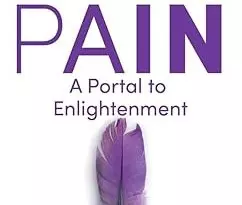Book Review: Celebrity grief memoir feeds into trauma industry

In the early 1960s, British nurse Cicely Saunders pioneered the concept of “total pain”, a comprehensive term that encompasses emotional, physical, social and spiritual suffering. This revolutionary idea was an important contribution to the emergence of the hospice movement and palliative care in modern medicine. In today’s society, where the understanding and management of pain are crucial for the individual’s well-being, there is a need for informative and accessible resources.
Therefore, the book Pain: A Portal to Enlightenment by Shweta Singh Kirti, a US-based fashion designer-turned-entrepreneur and spiritual mentor, explores the spiritual aspect of pain in depth. This exploration is particularly noteworthy in the context of the death of her brother, Indian Bollywood star Sushant Singh Rajput, on June 14, 2020. This book is meant to be a tribute to Sushant, the youngest of five siblings. It is dedicated to his memory with the “aim of honoring his legacy and sharing the light he brought to the world”. However, the book has several contradictions and omissions that detract from its overall impact. Important details such as Sushant’s role in Shweta’s life, his mental health and Shweta’s spiritual guidance to him are conspicuously missing. Apart from a few childhood memories, the book seems to be more about the author’s journey of self-discovery and healing than a sincere tribute to Sushant.
Shweta, who was born in the 1980s in Patna, the capital of Bihar, as the daughter of Usha Singh and Krishna Kishore Singh, briefly mentions her Rajput family in the book. However, she refrains from discussing several social realities such as the challenges faced by a girl in Bihar, the influence of caste and class and the role of religion in daily life.
For example, when Shweta visited the Dakshineswar Kali temple in Kolkata as a teenager, she burst into tears in front of the idol. She later explained this as an intense feeling of separation or “viraha”. She also mentioned her mother’s teaching that “God always listens”, which she accepted as fact. However, the book is full of such scattered confessions that fail to question or delve deeper into why these feelings of abandonment and unshakable faith arose in the author’s life.
The chapter titled ‘My Spiritual Insights and Breakthroughs’ contains descriptions of “Experiencing Krishna”, “Aparokshanubhtu — Contemplation, Realisation and Oneness”, “Emptiness and Light Experience” and “Experiencing Death Two-and-a-Half Times”. It is full of fleeting examples of religious delusion, “Conversations with God” and tidbits about reincarnation and depersonalisation. For example, when Shweta lost her mother in December 2002, she had a strange open-eyed nightmare. She saw Kali Maa, described in the book as a “dark Hindu goddess”, approaching her and pulling something out of her body. Since the author knew nothing about “yogic meditation” or “dream yoga” at the time, it seems logical that this was a confabulation to make sense of her mother’s death. Confabulation is a memory disorder in which people produce false memories, especially after trauma. What is certainly missing from such personalised confessions is the author’s ability to critique her own mind.
The book then delves into scientific explanations of “pain”, misidentification of physical body, mind and character, the path to enlightenment, stabilising and living enlightenment, and finally rebirth as a spiritual being. Towards the end, the author poses a question to the readers: “Who is the one who knows God?” Her answer revolves around the concept of “I am”, defended by French philosopher René Descartes’ philosophical statement “cogito, ergo sum” (I think, therefore I am). Descartes would also later pose the question, “in what form do I exist (?)”, but the author doesn’t engage with this challenge.
The book’s scientific content unfortunately results in a confusing reading experience. Grief, trauma, and misidentification with the mind persist. The reader remains an outside observer, discouraged by the book itself from engaging in any sustained internalisation of the scientific terms used in the book, scattered sporadically in the chapters. The book oscillates between the author’s own spiritual experiences, the science of body and mind, moral philosophy, religion, psychology, and tidbits of Vedanta philosophy, leaving the reader sympathetic but directionless.
Thus, the lingering question remains: why was the book written? While Pain: A Portal to Enlightenment is an ambitious attempt, written with good intentions, it does not serve the interests of trauma survivors but instead becomes a victim of a trauma industry itself. As feminist Mary Beard argued in a piece called ‘The Public Voice of Women’, the anguished woman is an archetype bred of a history that values women’s voices only when they come from a personal place of pain. Lack of originality, along with the exaggerated personalised confessions, are largely packaged to conform to an age-old model of trauma and victimhood — one that sells.
Pain: A Portal to Enlightenment
By Shweta Singh Kirti
Penguin
pp. 256, Rs 399

